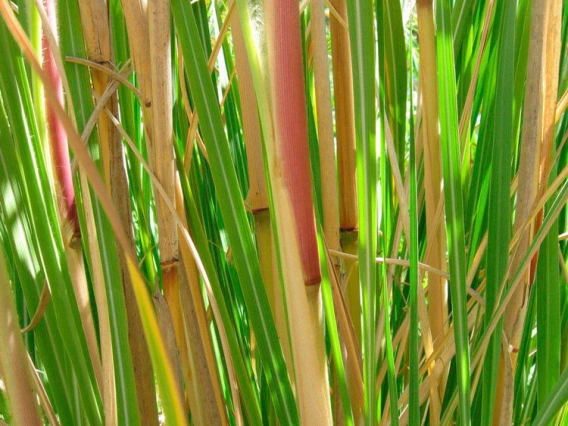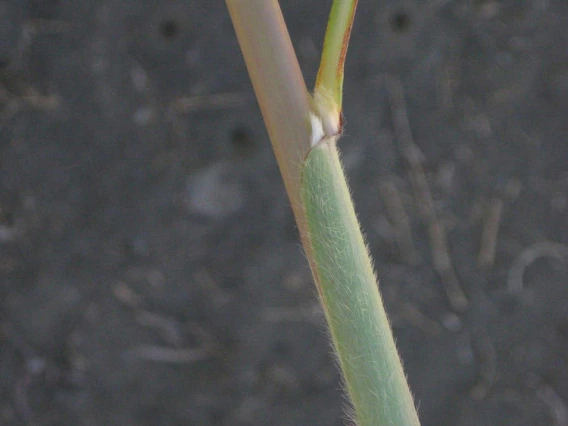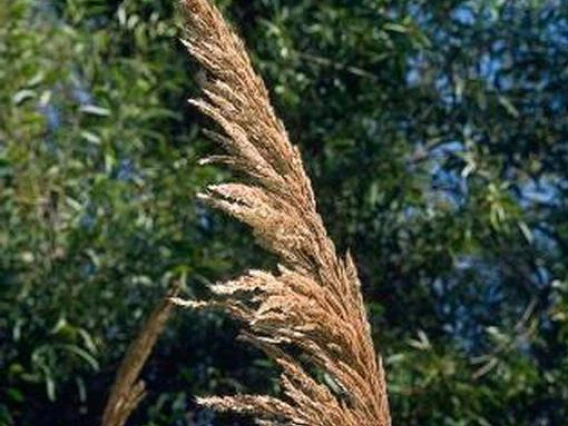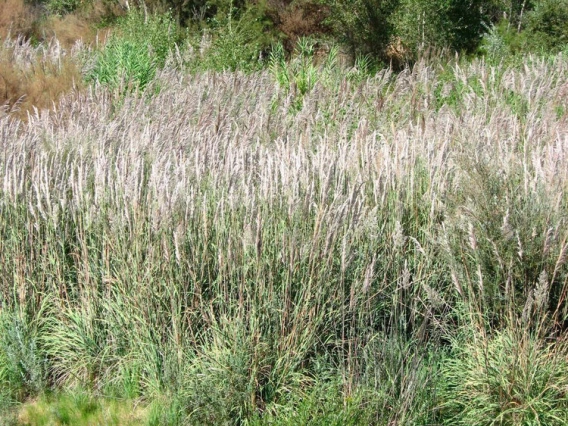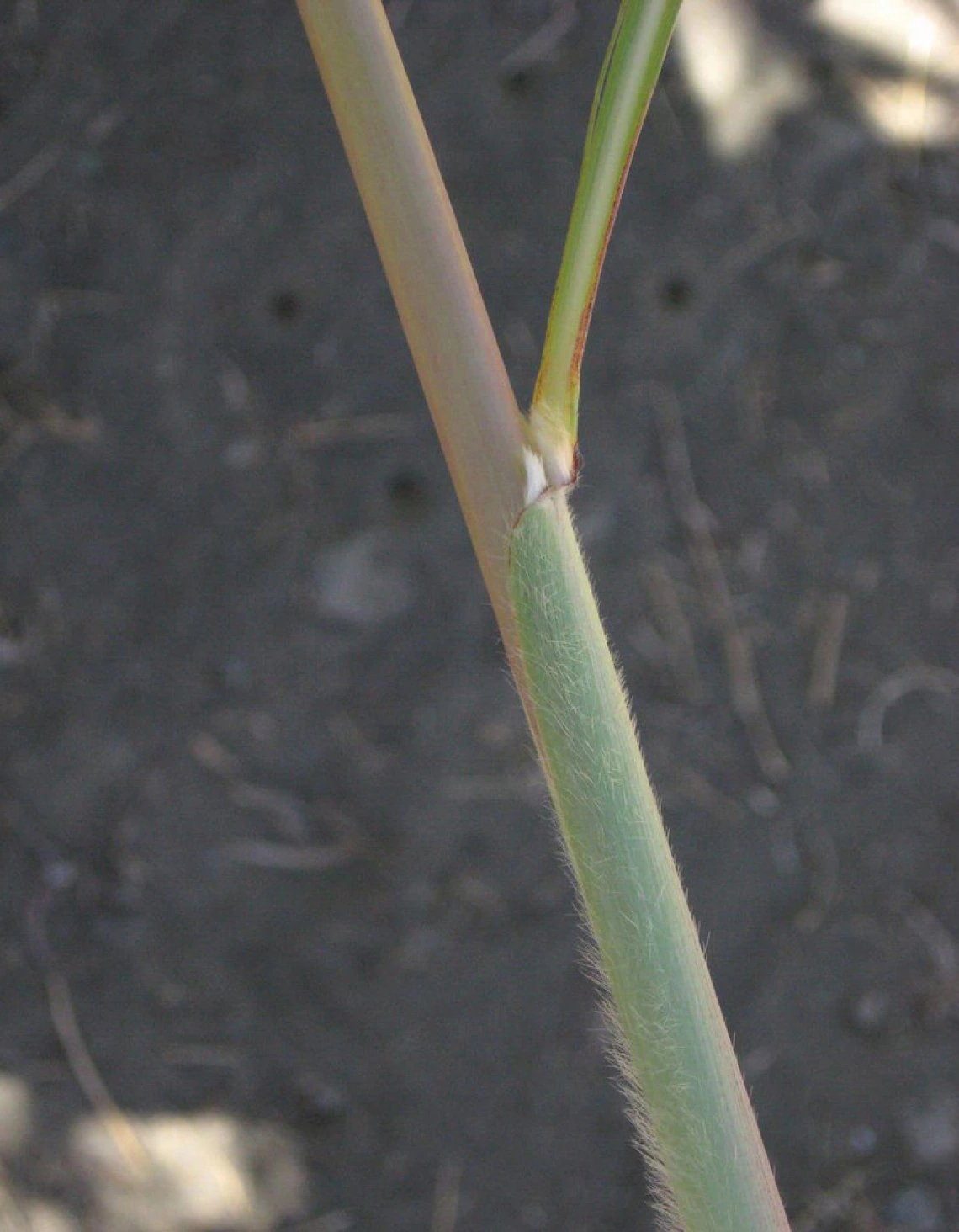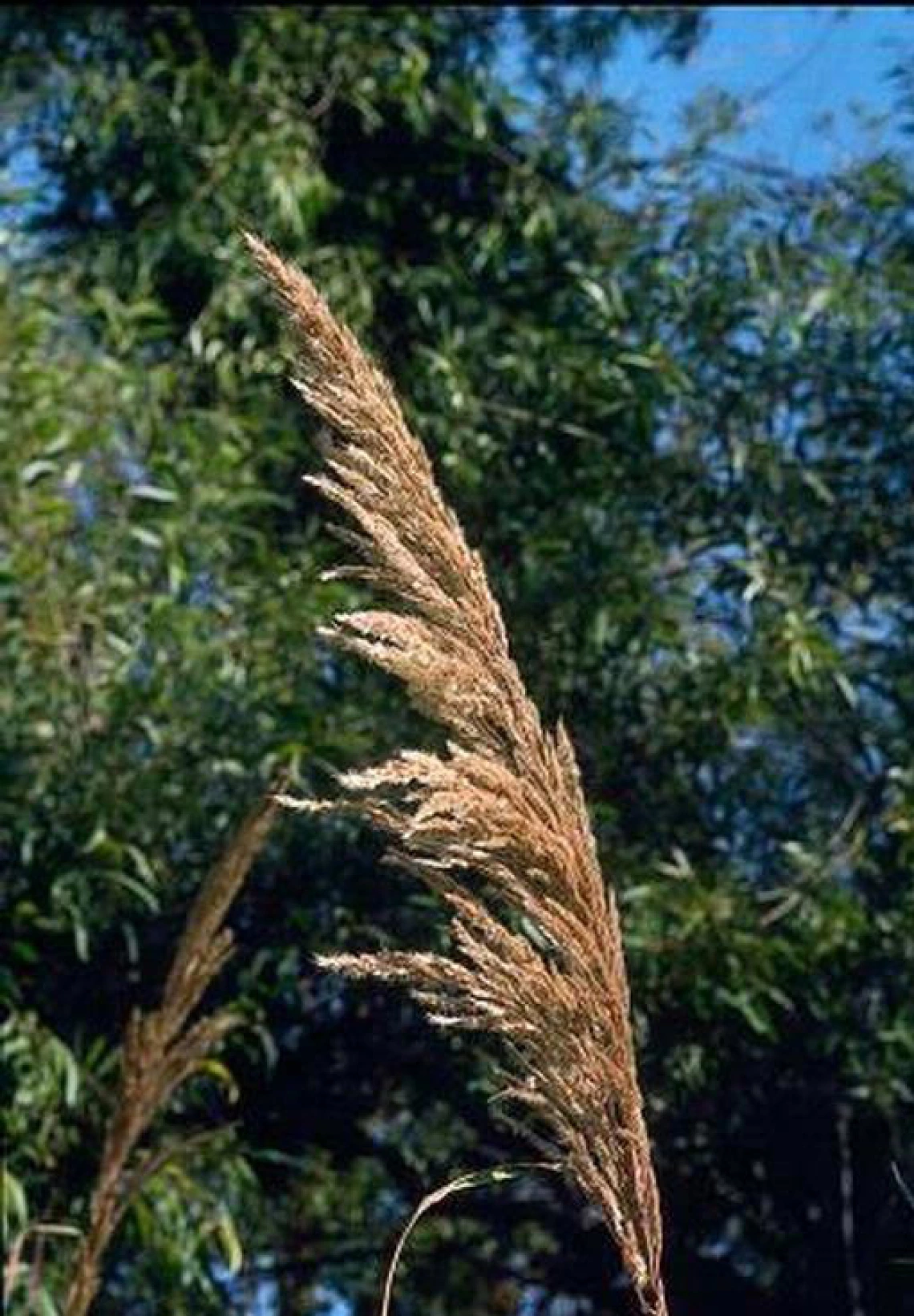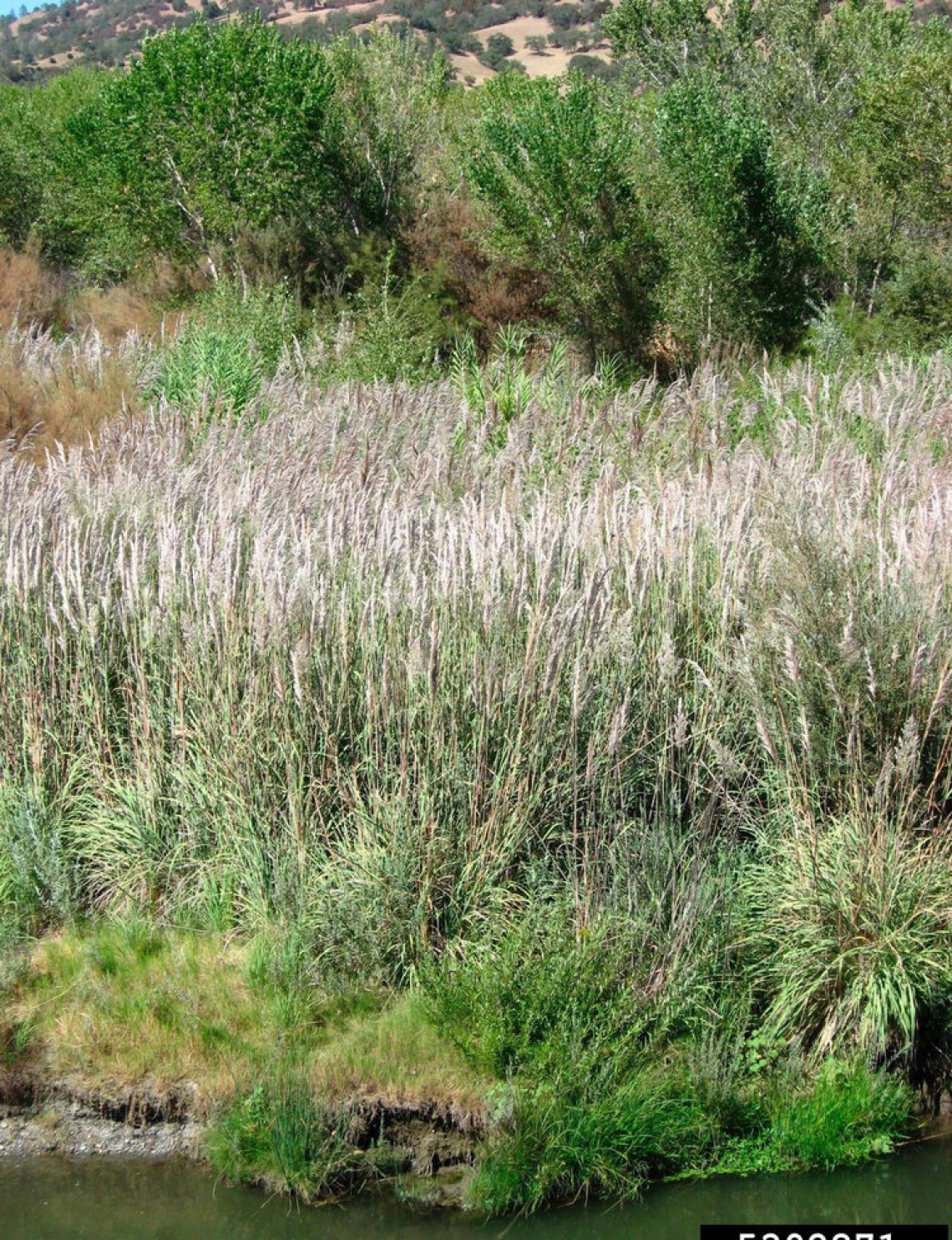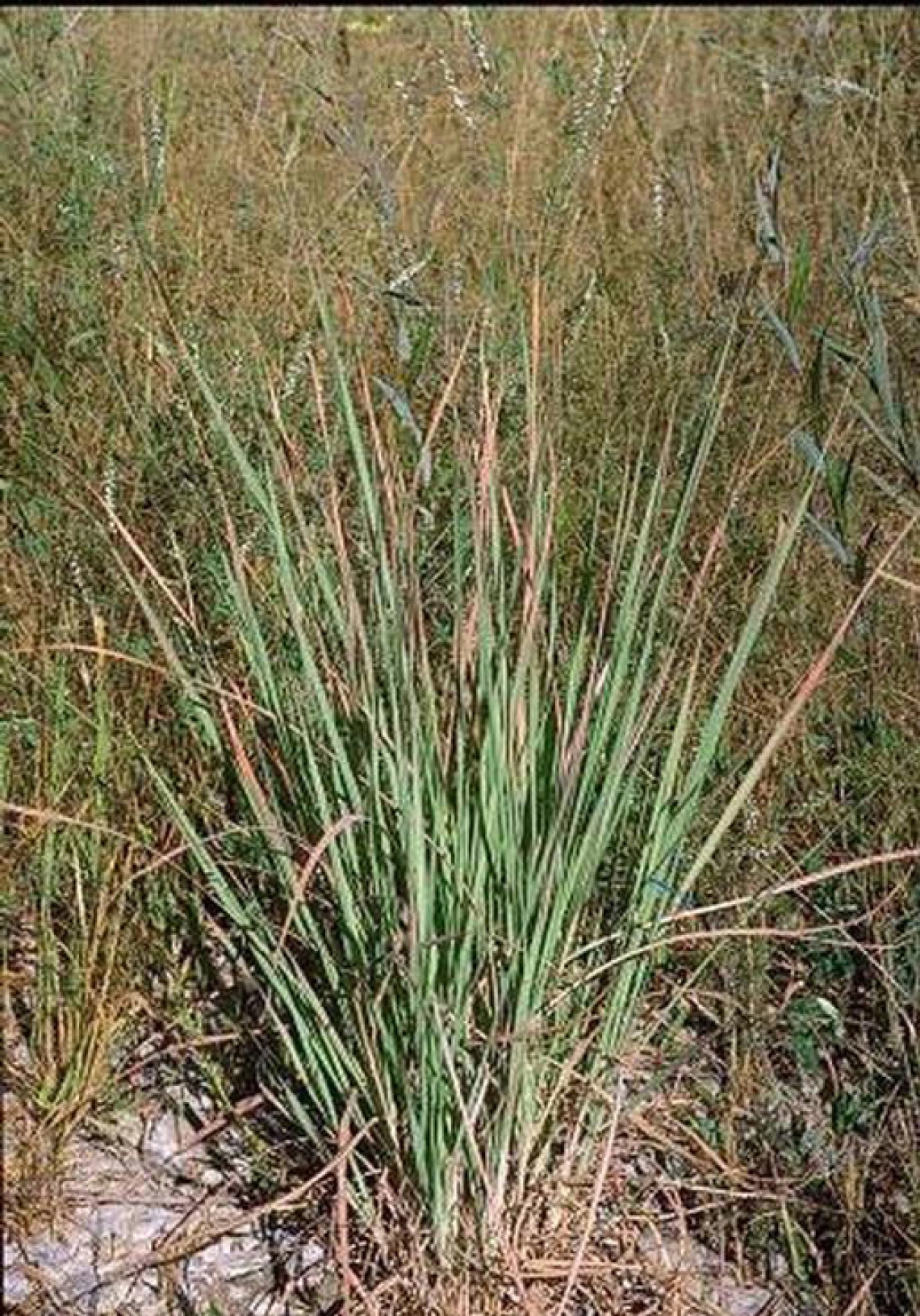Image

Ravenna grass
Specimen in the J. C. Raulston Arboretum, North Carolina State University, Wikipedia Commons
Common Name(s)
Ravenna Grass
Ravennagrass
Scientific Name
Tripidium ravennae
Saccharum ravennae
Family
Grass family (Poaceae)
Reasons for concern
This aggressive, rapidly spreading, and persistent species can quickly take over disturbed and unattended areas outcompeting native species and reducing plant diversity and wildlife habitat. It can form huge, impenetrable monocultures and is very difficult to eradicate. May have higher water use than some native riparian or wetland species because it has a lot of leaf surface area. Expansive populations have the potential to change riparian vegetation and stream characteristics in wetland habitats. Can be a wildfire hazard.
Classification
Non-native.
Botanical description
Large, erect bunchgrass that can reach 12 feet in height with flowering cane-like plumes up to 2 feet long. Clump size can be up to 7 feet in diameter.
Leaves
Distributed along the stem, up to the plumes. Large. Very densely covered with long, fuzzy, tawny hairs at base of leaf. Bottom of leaf has a white mid-vein running its entire length. Leaves are weakly serrated and don’t cut hands, like Pampas grass leaves do. (See also separate Fact Sheet on Pampas grass on this website.)
Stem(s)
Multiple plumes are pale, silvery, feathery on the tips of bamboo-like stalks growing up to 14 feet tall, appearing in late summer to early fall. Can have purplish-bronze coloring on stems in fall.
Inflorescence
Each plume produces thousands of tiny seeds that can be dispersed long distances by wind and water.
Roots
Very dense and diffuse root system
Native to
Eurasia. Introduced as an ornamental.
Where it grows
Disturbed areas. Moist places such as ditches, marshes, and riparian areas, including Glen Canyon National Recreation Area on the Arizona-Utah border. In Mohave, Maricopa, and Yuma counties. In Coconino County along the upper Colorado River in Grand Canyon National Park.
Lifecycle
Perennial
Reproduction
By seed
Weedy Characteristics
Establishes dense, large monocultures quickly, and control is extremely difficult. Root system is very vigorous and difficult to eradicate.
Control Strategies
Consult with a professional. Manually cut or chop out mature plants. All root and rhizome fragments must be removed to avoid re-growth. Always remove and bag plumes before they mature. Monitor plants frequently for re-growth. Heavily mulch bare sites or plant desirable vegetation to reduce seed establishment. Herbicides can be effective. Contact your local extension office for more information on chemical control.
References
- Ravennagrass. DiTomaso, J.M., G.B. Kyser et al. 2013. Weed Control in Natural Areas in the Western United States. Weed Research and Information Center, University of California
- Ravenna Grass. Franklin County, WA, Weed Control Board

